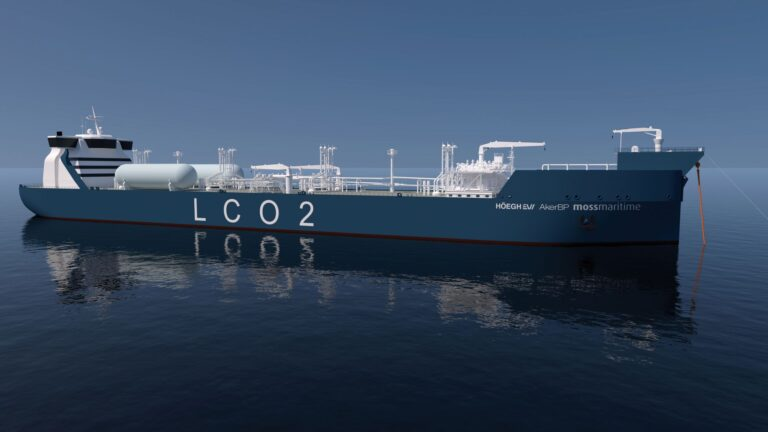Marine energy infrastructure developer Höegh Evi and oil major Aker BP have received an approval in principle (AiP) from classification society DNV for their liquefied CO2 (LCO2) carrier design in what was described as “a significant step” in enabling the carbon capture and storage (CCS) value chain and industrial decarbonization in Europe.

The partners revealed the milestone for the next-generation LCO2 carrier, designed to transport captured CO2 “safely and cost-efficiently” from European industrial emitters to offshore sequestration sites on the Norwegian Continental Shelf (NCS), on June 5.
The vessel was developed in Norway by Höegh Evi, Aker BP, and Moss Maritime.
DNV’s review of the vessel included a comprehensive assessment of the design, including its onboard CO2 conditioning module. The LCO2 carrier is said to be the first to be reviewed under DNV’s new CO2 RECOND class notation, developed specifically for CO2 handling and conditioning.
According to Höegh Evi, this vessel is a key part of a fully integrated carbon removal option for both large and dispersed EU emitters. As explained, the design integrates CO2 conditioning and offloading capabilities directly into the shuttle carriers to minimize complexity, reduce risk of impurity co-mingling, and ensure reliable injection into offshore reservoirs. Two approved variants of CO2 vessels will offer total capacities of up to 50,000 cubic meters of liquid CO2.
Höegh Evi added that the CCS solution can be applied for the Aker BP-operated CO2 storage licenses on the NCS, EXL 005 Poseidon and EXL 011 Atlas. Initially sized to handle up to 10 million tonnes of CO2 per annum, the solution may be scaled to accommodate growing market demand, the company said.


